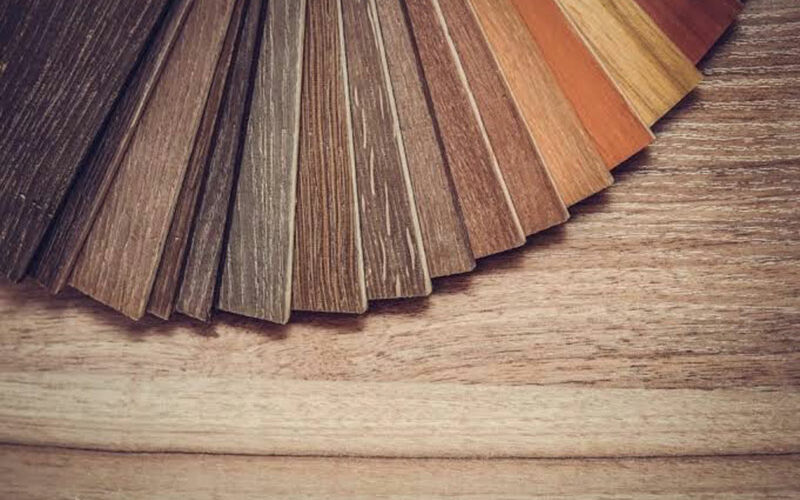Advertisement
Floors are an essential component of any property. After all, everyone who enters a room interacts with them somehow. When tenants look for new places to live, they look at the floors. It’s one of the first things most people notice when they enter a new space.
Ensuring tenants are comfortable and satisfied is crucial for landlords and property managers to run a successful rental business. A rental property’s flooring condition is an overlooked aspect that significantly impacts its overall appeal and value. It is crucial to recognize the clear signs that indicate when an upgrade is required because the flooring can experience severe wear and tear over time.
In this article, continue reading below as this post discusses three signs your rental flooring needs an upgrade and other information.
3 Signs Your Rental Flooring Needs An Upgrade
1. Visible Signs of Wear and Tear
As a landlord, you must monitor the flooring in your rental properties. Visible wear and tear are among the leading indicators to upgrade your rental flooring. Rental property floors experience significant foot traffic, spills, and everyday use over time, which can result in various damages. You should discuss your renovation plans with Bay Property Management Group in Prince George’s County to ensure you get the maximum ROI.
Scuff marks, fading, worn-out areas, and scratches are all apparent indications of wear and tear. You can maintain a good name for your rental property and keep your tenants satisfied by taking care of any obvious symptoms of wear and tear as soon as they become apparent.
The long-term maintenance costs of a home can be decreased by upgrading to more resilient and long-lasting flooring materials and improving its curb appeal. Regular inspections and timely improvements will go a long way toward ensuring your tenants have a good time living there and preserving the value of your rental investment.
2. Loud Noise and Creaks
It can be an obvious sign that an improvement is necessary if you hear more noises and creaks coming from the flooring of your rental home. Increased and creaking noise can upset tenants and are frequently signs of underlying structural problems or flooring wear and tear.
Floorboards and subflooring may weaken with use, deterioration, exposure to humidity, and temperature fluctuations. Investing in modern, intense, noise-reducing flooring materials is critical to overcome this issue. Flooring solutions that improve structural integrity and soundproofing will enhance the tenant’s living experience and protect the property’s value.
3. Frequent Repairs
If you’re continuously scheduling repairs for your rental flooring, it’s a clear sign that an upgrade is required. Frequent repairs indicate underlying problems with the flooring material, durability, or installation. This can cause significant difficulty for your tenants and higher maintenance expenditures over time.
Investing in new, more durable flooring solutions can lessen the need for frequent repairs, thus saving you money. Furthermore, updating to modern, low-maintenance materials will improve the overall aesthetic of your rental home, making it more appealing to prospective tenants.
Other Flooring-Related Issues
1. Noticeable Deterioration
Another flooring-related issue that needs addressing is visible deterioration. Rental flooring may show indications of wear and strain over time, such as scratches, stains, fading, and worn-out areas. High-traffic areas are the worst affected, with the flooring losing its shine and charm.
Upgrading the flooring to more durable and visually appealing solutions might help revitalize the space and attract new renters. Landlords can make a great impression by investing in high-quality materials, enhancing tenant retention, and adding value to their rental property. Regular inspections and timely upgrades are critical for keeping rental flooring appealing and in good shape.
2. Uneven surfaces
Uneven surfaces in rental flooring constitute a significant concern that requires quick correction. Such flaws can cause tripping hazards for renters and guests, putting landlords at risk of injury and legal responsibility. Foundation settling, water damage, or faulty installation are common causes of uneven floors.
Immediate attention to uneven surfaces is critical for ensuring a safe and habitable living environment. Landlords should conduct frequent inspections to identify and correct such issues. Repairing or replacing damaged flooring with level and smooth materials would increase safety and improve the overall renter experience and satisfaction.
3. Squeaking
Another common flooring-related issue that requires addressing is squeaking. Ignoring squeaking can cause additional damage, potentially leading to more severe problems in the long run. It may also have an impact on tenant satisfaction and perceptions of the general state of the property. Addressing squeaking as soon as possible by tightening loose floors, adding additional fasteners, or considering an upgrade to more solid and noise-reducing materials will improve tenants’ living experiences and preserve the value of your rental property.
Defining a Flooring Budget

1. Set a budget
Many homeowners need to create a budget before beginning their projects. If you’re considering installing new flooring, make sure you know exactly how much you’ll be able to spend, as this will undoubtedly influence the sort of flooring you select. Suppose you determine your budget ahead of time. In that case, a flooring contractor will have a much easier time assisting you in choosing the scope and design of your job. Furthermore, creating a schedule will be a breeze with a budget in place.
2. Choosing the Right Flooring
Your chosen product and the space you need to cover will determine most of your budget. Consider your needs first when selecting the right flooring product.
Then, carefully investigate each flooring choice to see which fits your project ideas best. Luxury vinyl and laminate flooring are cost-effective and functional, allowing you to achieve any desired style.
3. Finalizing your Plan
Now that you’ve decided on a budget and a type of flooring, it’s time to finalize your plans with an installation professional. Remember that changing modifications in the middle of a project can result in more expenditures and headaches, so stick to your schedule as much as possible.
Conclusion
Recognizing signs that your rental flooring requires an upgrade is critical for retaining tenants and protecting your investment. Visible wear and tear, regular repairs, and an out-of-date appearance are all indications that you should notice. You may improve the overall attractiveness of your rental home and attract potential tenants by resolving these issues swiftly and investing in durable, modern flooring solutions.
Furthermore, while contemplating an upgrade, it is critical to prioritize safety, reduce noise, and prevent water damage. With careful planning and a well-defined flooring budget, you can ensure a comfortable and visually beautiful living environment that benefits your renters and rental business.

